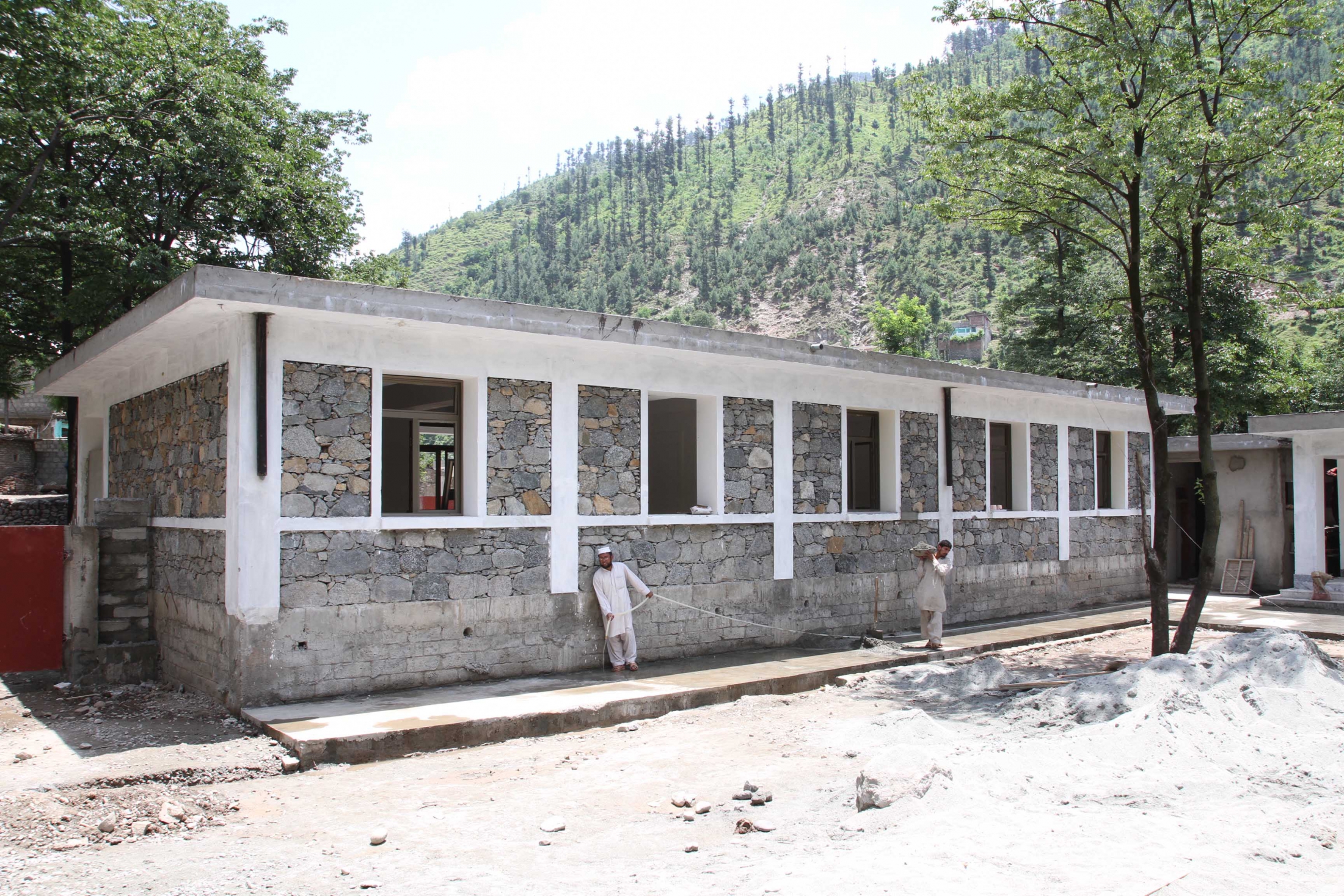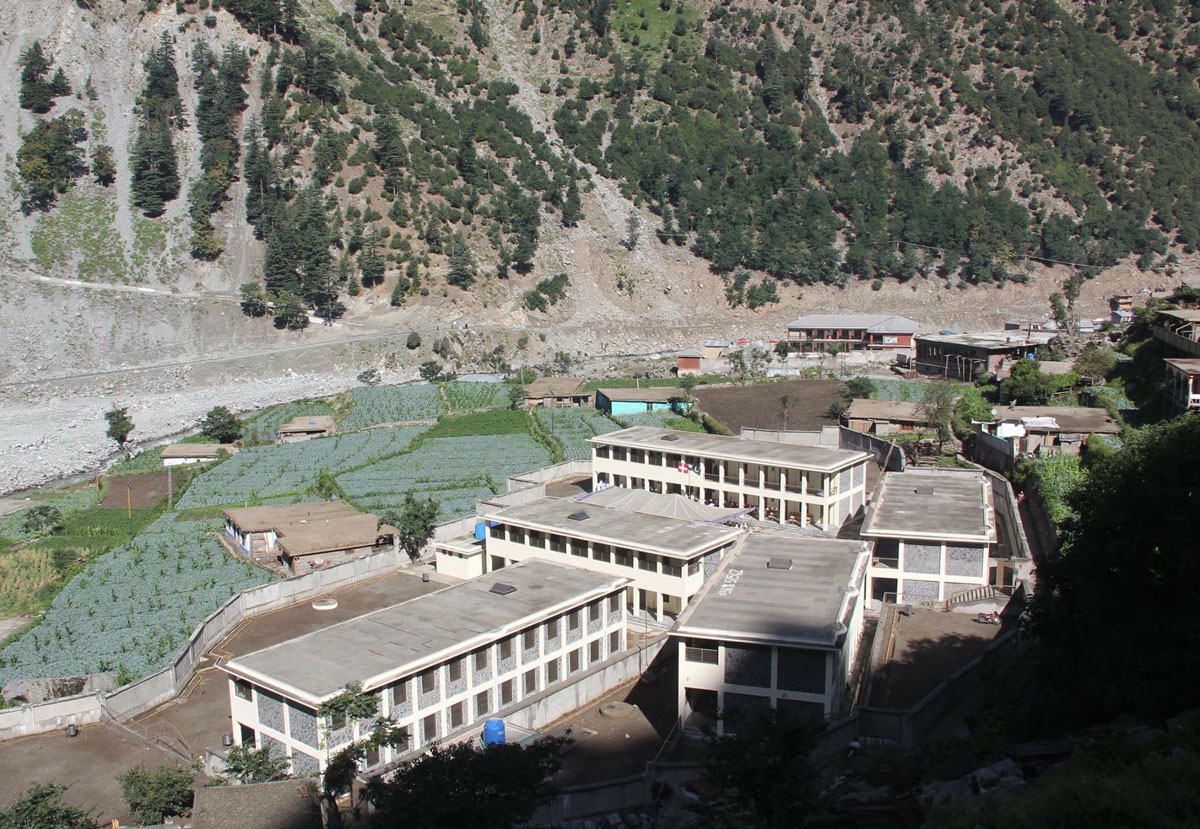
Reconstruction of Flood affected Schools
Khyber Pakhtunkhwa, Pakistan
Can a school’s design serve as a example for improving education?
Education in Pakistan was hit hard during the 2010 floods when countless school buildings were damaged or des- troyed across the country. SDC set its focus for its school rehabilitation and reconstruction programme on this region. 23 disaster-resistant schools and four transitional school structures in Swat were built an 60 schools in Swat, Charsadda and Nowshera have been rehabilitated.
The schools design the should serve as a model for Pakistani public education and create an exemplary comfortable, healthy, and playful learning environment. The facility features new prototypical classrooms that ensure adequate daylight, ventilation, and acoustics for engaged learning. Notably, the school is landscaped with distinct play areas and outdoor education areas, as a means to promote healing and unity. The construction utilizes local materials, techniques, and labor, to ensure design solutions are replicable locally to address issues of school infrastructure throughout the region.
With this programme, more than 18,000 children have been provided with the education they were threatened to lose. Tribal leaders, elders’ councils and local residents were involved in the land-purchasing process as all of the schools had to be constructed on mostly privately owned land.
Complementary to the educational aspect of the pro- gramme, the communities benefit from centrally located disaster-resilient schools in case of future disasters.
project details
Location: Swat, Charsadda and Nowshera districts, Khyber Pakhtunkhwa, Pakistan
Program: 21 earthquake-resistant schools, 4 transitional school structures & 60 schools rehabilitation
Year: 2011 – 2014
Author: SDC-HA, Mikhail Broger, Franz Engler
Partners: Provincial Disaster Management Authority KP, Education Department, The University of Engineering and Technology Peshawar (UET)
Cost: 3 mio CHF
Services: Architectural & Structural Design, Landscape Design, Project & building management
beneficiaries: 18’000 children

